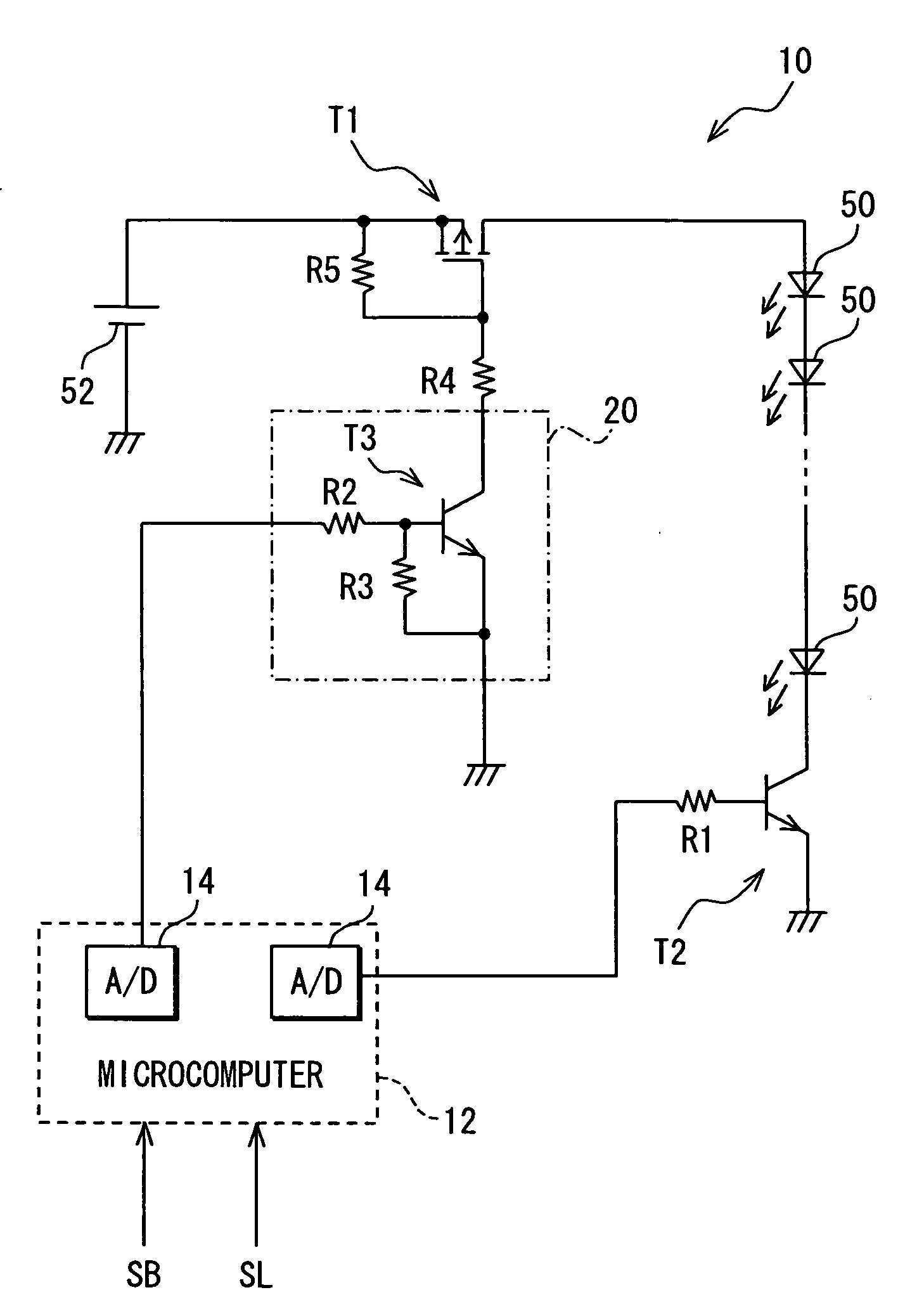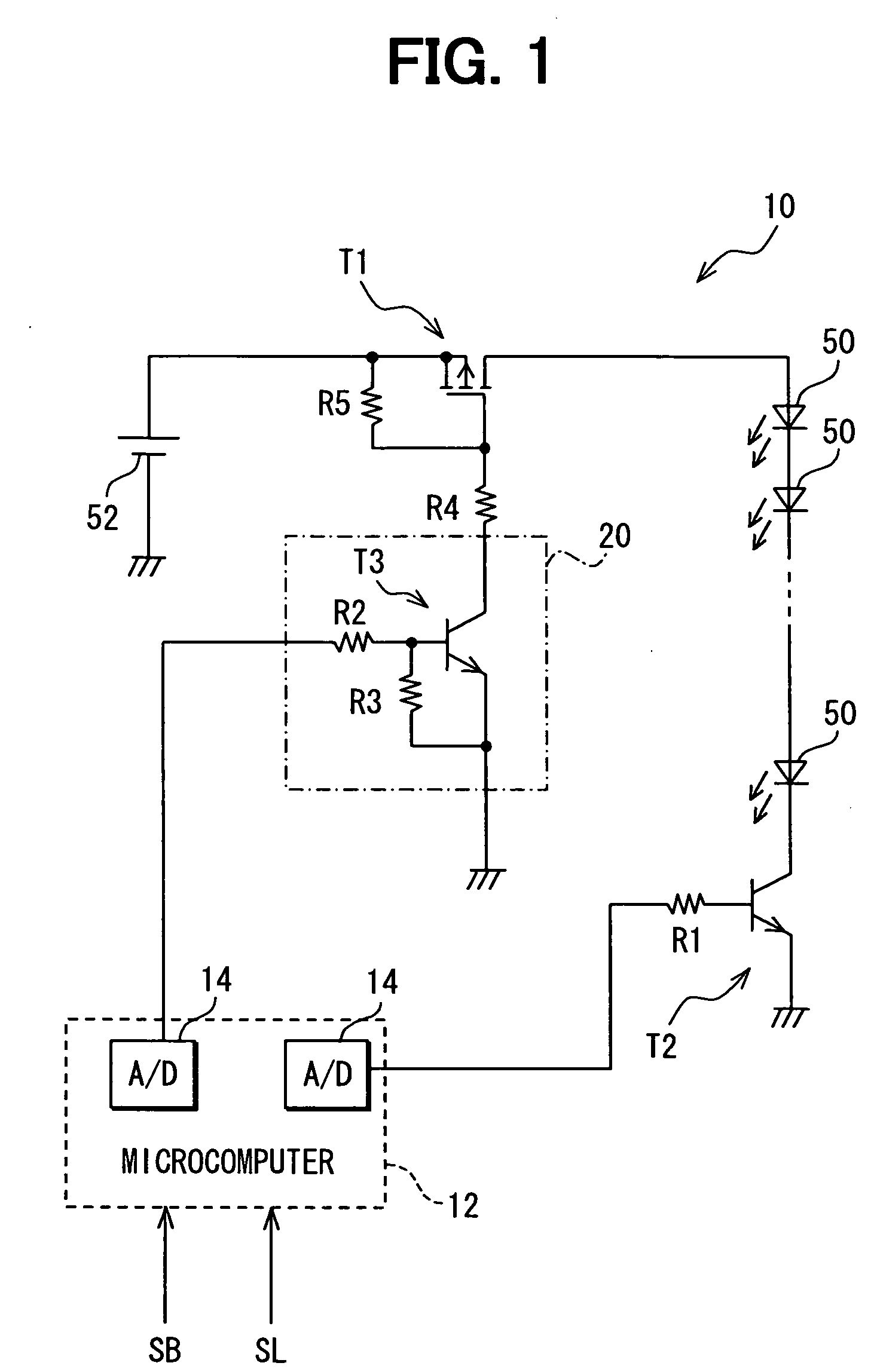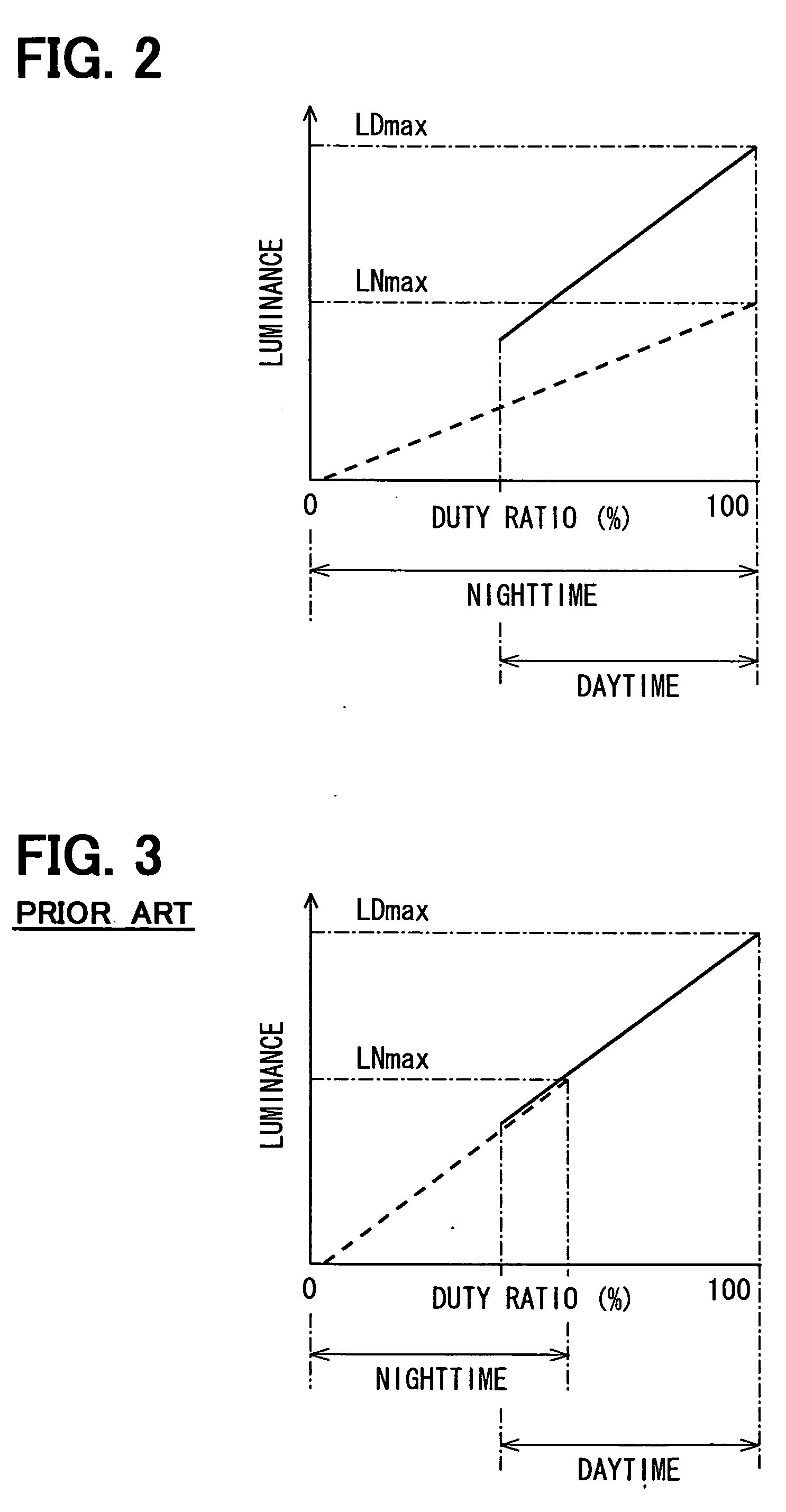Luminance control apparatus for light emitting device
- Summary
- Abstract
- Description
- Claims
- Application Information
AI Technical Summary
Benefits of technology
Problems solved by technology
Method used
Image
Examples
Embodiment Construction
[0019] Referring to FIG. 1, a luminance control apparatus 10 is constructed to control a luminance of series-connected light emitting diodes (LEDs) as a light emitting device 50. The LEDs may be connected in parallel in part. The device 50 is used as a backlight of a liquid crystal display device for a vehicle.
[0020] The apparatus 10 is constructed with a first transistor T1, a second transistor T2, a microcomputer 12 and a driver circuit 20. The first transistor T1 is a normally-off type P-MOSFET and operates as a switching device. The source and the drain of the FET are connected to a vehicle battery 52 and the light emitting device 50, respectively. The second transistor T2 is a bipolar type. The collector, the emitter and the base are connected to the light emitting device 50, the ground and the microcomputer 12 through a resistor R1, respectively.
[0021] The driver circuit T3 includes a third transistor T3, which is a bipolar type, a resistor R2 and a resistor R3. The resistor...
PUM
 Login to View More
Login to View More Abstract
Description
Claims
Application Information
 Login to View More
Login to View More - R&D
- Intellectual Property
- Life Sciences
- Materials
- Tech Scout
- Unparalleled Data Quality
- Higher Quality Content
- 60% Fewer Hallucinations
Browse by: Latest US Patents, China's latest patents, Technical Efficacy Thesaurus, Application Domain, Technology Topic, Popular Technical Reports.
© 2025 PatSnap. All rights reserved.Legal|Privacy policy|Modern Slavery Act Transparency Statement|Sitemap|About US| Contact US: help@patsnap.com



